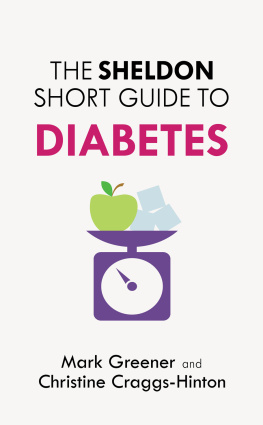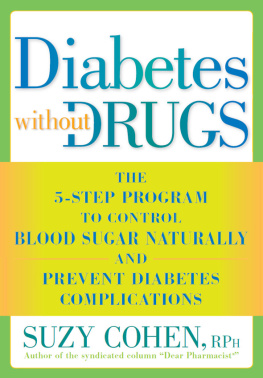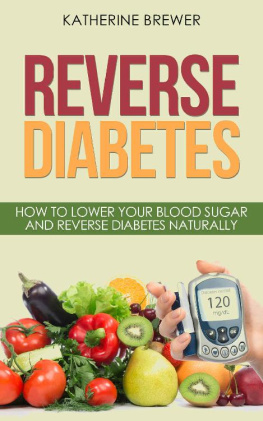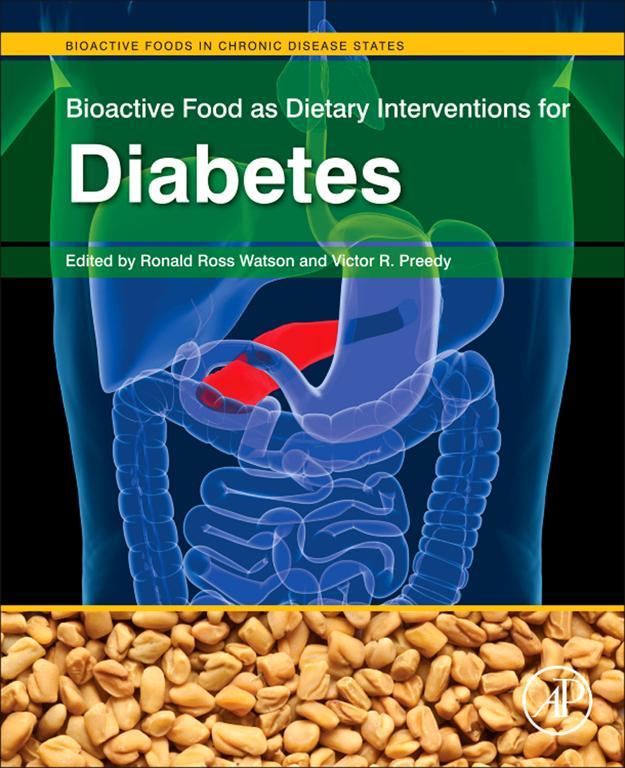Copyright 2013 Elsevier Inc. All rights reserved.
No part of this publication may be reproduced, stored in a retrieval system, or transmitted in any form or by any means electronic, mechanical, photocopying, recording or otherwise without the prior written permission of the publisher.
Permissions may be sought directly from Elseviers Science & Technology Rights, Department in Oxford, UK: phone (+44) (0) 1865 843830; fax (+44) (0) 1865 853333; email: for further information.
No responsibility is assumed by the publisher for any injury and/or damage to persons, or property as a matter of products liability, negligence or otherwise, or from any use or, operation of any methods, products, instructions or ideas contained in the material herein. Because of rapid advances in the medical sciences, in particular, independent verification of diagnoses and drug dosages should be made.
For information on all Academic Press publications visit our website at elsevierdirect.com
Preface: Diabetes Food
Diabetes mellitus affects approximately 20 million people in United States. This number is expected to increase by 70% in the next 25 years. Numerous epidemiologic studies have demonstrated that type 2 diabetes increases the risk of cardiovascular morbidity and mortality. The increased risk is due to the detrimental vascular effects of prolonged exposure to a hyperglycemic, oxidant-rich environment, yielding associated cardiovascular risk factors. Treatment of hypertension and dyslipidemia in diabetic patients produces substantial decreases in heart disease. It is difficult to achieve the target blood pressure goal with pharmacological therapy without frequent side effects, encouraging investigation of dietary supplements as therapy or prevention of cardiovascular effects of diabetes.
Historical records and current research defining the beneficial and preventative effects of consumption of vegetables, fruits, and herbs in diabetes are extensive. Some benefits may be due to a class of compounds like antioxidants and others to specific complex molecules. Major emphasis is placed on potential or likely mechanisms of action, spurring further research. These summaries provide well documented materials and foods for health promotion in business, research and for the individual. Contributors are primarily experts in supplements and heart disease with international standing as leaders in the field. Plant extracts as dietary supplements are an 1822 billion dollar business in the United States affecting many individuals health. However, the overall goal is to provide the most current, scientific appraisal of the efficacy of key foods, nutrients, herbs, and dietary supplements in preventing a major factor in chronic disease in older adults, diabetes mellitus. There is compelling evidence that oxidative stress is implicated in the pathophysiology of diabetes. Increased free radical formation and reduced antioxidant defenses contribute to increased oxidative stress. Importantly diets rich in antioxidants in human dietary studies reduce the incidence, suggestive of potential protective roles of antioxidant nutrients. This book investigates the role of foods, herbs, and novel extracts in moderating the pathology leading to diabetes and its risk factors for other chronic diseases.
This book has 47 chapters authored or co-authored by more than 140 experts on various dietary foods, herbs, and extracts as modulators of diabetes or lacking such actions. An important review covers 2011 research on supplements and diabetes control. There are nine chapters with general reviews, such as the role of oxidative stress in insulin resistance, and the role of supplements in diabetes. In addition, reviews show that diabetes induces an immune dysfunction syndrome, and supplements can help control it. Government regulations affect the role of supplement use to treat diabetes as reviewed as well as community participation in diabetes control. Chapters define the role of foods and herbs in indigenous Canadian peoples treatment of diabetes, as well as Indias historic use of herbs for its control. Two reviews focus on the Arab world and Islams use of traditional therapies and their efficacy or lack thereof.
A variety of small molecules are described in six chapters as modulators of diabetes. These chapters on nutrients include vitamin D, essential fatty acids, magnesium, calcium and amino acids whose roles are defined and documented. Non-nutritive small molecules also show benefits in diabetes symptoms modification as reviewed in two chapters on taurine and lutein.
Four reviews include an overview of complementary and alternative therapeutics of a variety of herbs: fenugreek, reduction of glucose by garlic, using the anti-diabetic activity of onions, and mushrooms in diabetics care. India has a history of plants, herbs, and food uses in health. Additionally nine chapters review the benefits of vegetables, okra, pomegranate, black plum, prickly pear cactus, honey and Amla and their components various anti-diabetic actions. There are 2 chapters reviewing individual constituents in Indian diets as well as Ayurveda medicines traditional use of botanical and diabetes therapy. Non-Indian food bioactive compounds are broadly reviewed in diabetes. While most chapters involve botanicals, three involve probiotics, milk, and other fermented materials as modulators of diabetes. Chapters range from broad reviews of types of foods, their components and unknown materials in individual historically-used herbal medicines.
Contributors
E.L. Abbey , Whitworth University, Spokane, WA, USA
A. Abraham , Clemson University, Clemson, SC, USA
R. Aquilani , IRCCS, Medical Center of Montescano, Pavia, Italy
J. Araiz , Universidad Pas Vasco, Vizcaya, Spain
S.L. Badole , PESs Modern College of Pharmacy, Pune, Maharashtra, India , Bharati Vidyapeeth Deemed University, Pune, India
B.R.V. Baliga , Father Muller Medical College, Mangalore, Karnataka, India
M.S. Baliga , Father Muller Medical College, Kankanady, Mangalore, Karnataka, India
M. Barnes , AIBMR Life Sciences, Inc
D.H.M. Bastos , University of So Paulo (USP), So Paulo, Brazil
S.L. Bodhankar , Bharati Vidyapeeth Deemed University, Pune, India
C. Bommeli , PADMA AG, Schwerzenbach, Switzerland
E. Cavalier , University of Liege, Lige, Belgium












